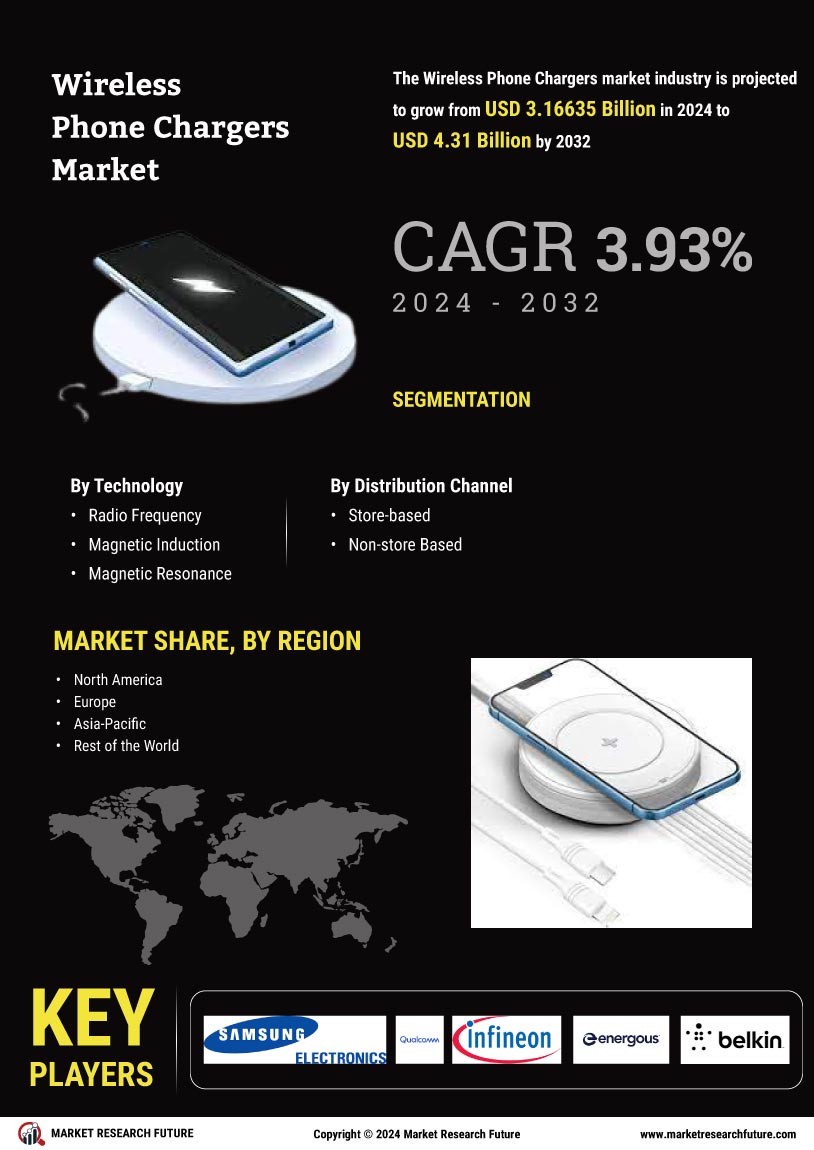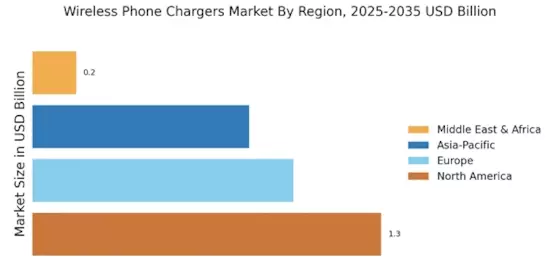Rising Smartphone Adoption
The increasing adoption of smartphones is a primary driver for the Wireless Phone Chargers Market. As more consumers acquire smartphones, the demand for accessories, including wireless chargers, escalates. In 2025, it is estimated that smartphone penetration will reach approximately 80% in various regions, leading to a corresponding rise in the need for convenient charging solutions. This trend is particularly pronounced among younger demographics, who prioritize technology and convenience. The Wireless Phone Chargers Market is likely to benefit from this growing consumer base, as users seek efficient and innovative charging methods that align with their mobile lifestyles.
Technological Advancements
Technological advancements in wireless charging technology are significantly influencing the Wireless Phone Chargers Market. Innovations such as faster charging speeds, improved energy efficiency, and enhanced compatibility with various devices are attracting consumers. For instance, the introduction of Qi-certified chargers has standardized wireless charging, making it more accessible. In 2025, the market is projected to grow at a compound annual growth rate of around 15%, driven by these advancements. As manufacturers continue to invest in research and development, the Wireless Phone Chargers Market is expected to evolve, offering consumers more sophisticated and reliable charging solutions.
Expansion of E-commerce Platforms
The expansion of e-commerce platforms is facilitating the growth of the Wireless Phone Chargers Market. With the increasing popularity of online shopping, consumers have greater access to a variety of wireless charging products. E-commerce platforms provide a convenient avenue for consumers to compare prices, read reviews, and make informed purchasing decisions. In 2025, it is projected that online sales of wireless chargers will account for a substantial portion of the market, driven by the convenience and accessibility of e-commerce. This trend is likely to enhance competition among manufacturers, further stimulating innovation within the Wireless Phone Chargers Market.
Increased Environmental Awareness
Growing environmental awareness among consumers is shaping the Wireless Phone Chargers Market. As individuals become more conscious of their ecological footprint, there is a rising demand for sustainable and eco-friendly charging solutions. Many manufacturers are now focusing on producing wireless chargers using recyclable materials and energy-efficient technologies. This shift not only appeals to environmentally conscious consumers but also aligns with broader sustainability goals. In 2025, it is anticipated that the market for eco-friendly wireless chargers will expand, reflecting a significant trend within the Wireless Phone Chargers Market as consumers prioritize sustainability in their purchasing decisions.
Integration with Smart Home Devices
The integration of wireless phone chargers with smart home devices is emerging as a key driver for the Wireless Phone Chargers Market. As smart home technology becomes more prevalent, consumers are increasingly seeking products that seamlessly connect with their existing devices. Wireless chargers that can interact with smart speakers, home automation systems, and other IoT devices are gaining traction. This trend not only enhances user convenience but also positions wireless chargers as essential components of modern smart homes. In 2025, the demand for such integrated solutions is expected to rise, reflecting a significant evolution within the Wireless Phone Chargers Market.


















Leave a Comment